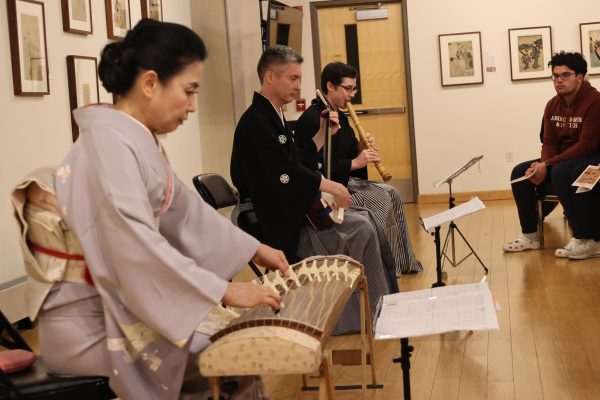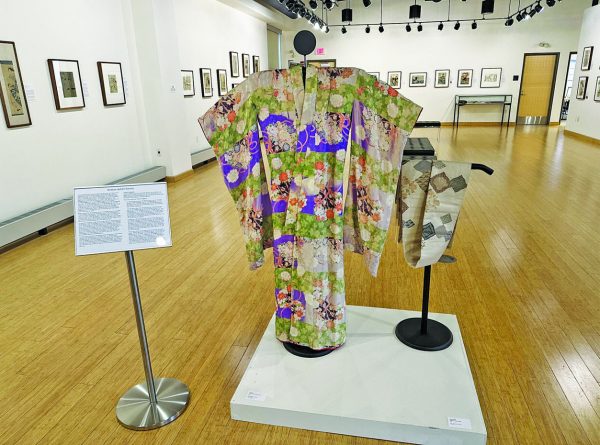What’s Behind the Groundhog Grievances?
September 24, 2018
The university has a groundhog problem. Those fat, fuzzy creatures are all over the place. There are so many that rumors about the invasion are a-buzzing.
“I just heard that there were just so many, and they were a problem because they eat plants and whatnot, and you know, we work so hard on our beautiful landscaping,” said Zoe Laporte, Senior English and mass communications major. “But in trying to get rid of them— there were just too many! They have little tunnels underground. They have a whole civilization under there! I mean, poor little guys are just trying to make a living.”
Laporte remarked that the tunnels are similar to the catacombs of Paris.
“It’s the catacombs of groundhog,” Laporte said.
Annette Ritzko, senior speech language pathology major, lived on campus during the summer and had her own experiences with the groundhogs.
“So during the summer, there was a really fat groundhog that lived behind our townhouse and I had, up to that point, taken a lot of care into growing a little community garden,” Ritzko said. “I really didn’t want this groundhog to eat the things I had just grown, but my roommate really liked the groundhog, so she gave it a cute nickname, Tom, and gave it food and water.”
Ritzko thought the groundhog was cute, but she did not want it to destroy her garden.
Ritzko and her roommate are not the only ones to observe the groundhogs up close.
“Alright, so these groundhogs are not afraid of people whatsoever,” said Dominic Augustine, junior mass communications major. “They always chill by Mercy Center, they can be seen hanging out either in the open grass or under any of the plants. A lot of them seem to have holes buried in any of the pipelines, so I’m not sure if that’s going to be an issue regarding any landscape work that might come up soon or any construction projects on campus, or if that might cost any money to get fixed or treated.”
Augustine stated that he is not sure if the university plans on taking action against the groundhogs.
“But, I mean, they’re there. We’re here. I don’t know what else is gonna happen.”
Augustine does not believe the groundhogs are necessarily a nuisance.
“The destruction of property, yes, because I’m not sure if they’re digging holes in the pipelines, however they kind of just… chill. So as long as we don’t run over them, I think that we’re good,” said Augustine.
Groundskeeper John Mokychic had an explanation: The university has always had a groundhog problem.
“I’ve been here for four-and-a-half years, and as long as I’ve been here, there’s always been a problem,” Mokychic said.
The groundhogs tend to stay near the front near the arch, he said, but they migrate all over.
“We have problems everywhere— under the sheds, athletics, and they’re just a nuisance as far as mowing and everything.”
The reason for the crowd of critters stems from the fact that the groundskeepers have not trapped groundhogs at all this year.
“I think because of the construction going on, the ones that normally concentrate in that front basin have moved over to Mercy Center, so we have not done any of the trapping this year,” said Mokychic.
The grounds crew caught between 16 and 18 groundhogs in 2016. Crews trapped and relocated them safely, Mokychic said.
“We have permission with the Pennsylvania Games Commission to take them out to either game lands up past Sweet Valley, or State Forest up that way,” he said.
The danger post by groundhogs does lie with their tunneling.
“They can dig underneath the structures, under sheds and things, and ruin the foundations. Out front, as far as mowing goes, it’s impossible to mow in some of the places because they have so many holes and so much dirt and rocks out,” said Mokychic.
Mokychic explained that the grounds crew does not trap the groundhogs in the early spring when they are having their babies. They only trap them when the babies are old enough to take care of themselves.
“So if we don’t get them out, they just keep reproducing, and they just come over from other places— neighboring properties, yards.”
The tunneling, though damaging, is not nearly the labyrinth that one might expect, however.
“If you go to their holes, and you figure out which hole is more active as far as which ones they’re coming in and out of, digging the fresh dirt out of, you just use a live trap and put apples in them. When the apples don’t work anymore we start using cantaloupe. We found out that the sweeter it is, the better. So sometimes it can be difficult, sometimes they know what you’re doing, and you have to get a little smarter. They see their buddies trapped, or whatever.”
Mokychic said trapping in itself is not that difficult.
The groundhogs are free to dig another day— for now.






